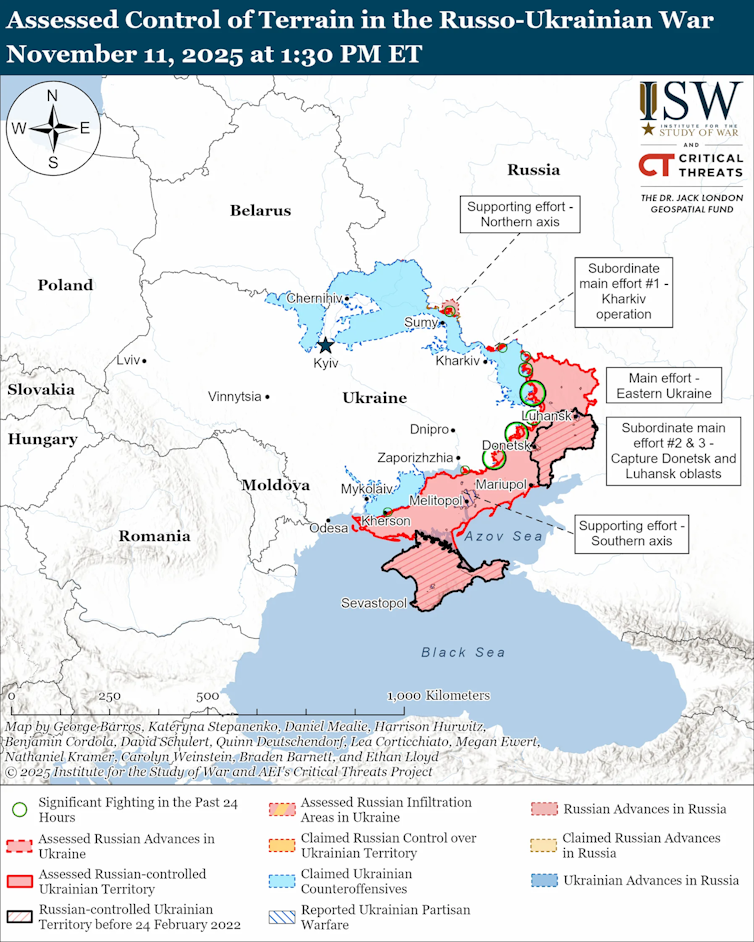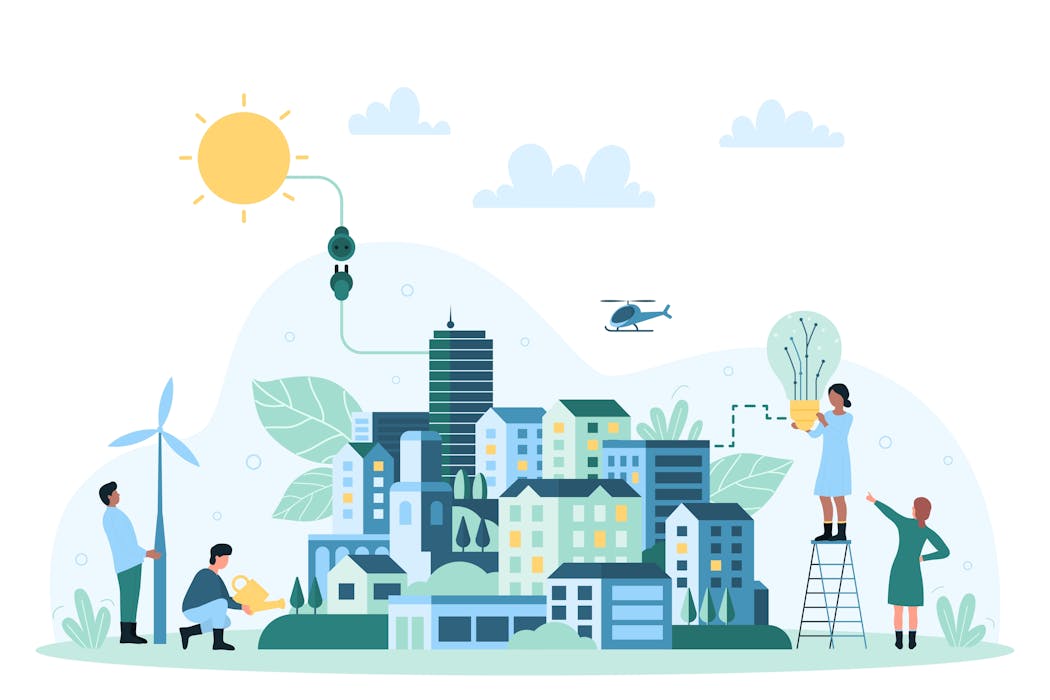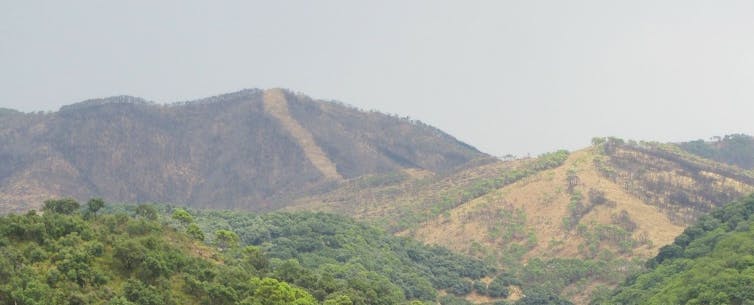Source: The Conversation – UK – By Jonathan Este, Senior International Affairs Editor, Associate Editor, The Conversation
This newsletter was first published in The Conversation UK’s World Affairs Briefing email. Sign up to receive weekly analysis of the latest developments in international relations, direct to your inbox.
Nightly, for months now, Ukraine’s cities have been pounded by relentless aerial attacks. In addition to its grinding and attritional ground offensives in the east and south of the country, since early summer, the Russian military has greatly expanded its air offensive against centres of population, looking to collapse morale and undermine the Ukrainian people’s will to fight on.
And as winter approaches, so those aerial bombardments have targeted Ukraine’s power infrastructure.
Repeatedly in recent weeks, whole cities have been plunged into cold darkness as power plants, transmission lines and regional and local substations are damaged or destroyed. Rolling power outages are now common, reportedly lasting up to 14 hours in some cases.
So the latest political scandal to hit the government of Volodymyr Zelensky could hardly have come at a worse time for his country. And to make matters worse, it revolves around Ukraine’s energy industry.
Ukraine’s anti-corruption agencies this week released the findings of Operation Midas, an 18-month probe into Energoatom, the state-owned operator of all of Ukraine’s nuclear power plants, investigating allegations of bribes and kickbacks said to amount to US$100 million (£76 million). Raids were carried out around the country and seven people have been arrested.
What makes this so dangerous for Zelensky is that one of the people named in the probe is a former business partner of his. Businessman Timur Mindich was the co-owner, with Zelensky, of Kvartal 95 Studio – the platform on which the Ukrainian president made his name as a comedian before he entered politics (ironically, under the circumstances, as an anti-corruption candidate).
Mindich is reported to have left the country, but he is said to have connections to several senior government ministers. The scandal risks tainting the already embattled Zelensky government by association.
What’s worse, as Stefan Wolff and Tetyana Malyarenko explain, is that only a few months before this scandal exploded, Zelensky tried to bring Ukraine’s independent anti-corruption agencies under the direct control of his government. He backed down in the face of huge demonstrations, but this latest corruption scandal is likely to weaken him further.
He has already lost his justice minister, German Galushchenko, and energy minister, Svitlana Hrynchuk. And, as Wolff and Malyarenko point out, the last thing Zelensky needs while his European allies debate how to raise desperately needed funds to keep fighting is a whiff of corruption surrounding his administration.
Having spent the day debating how to raise the huge amounts of money Ukraine will need in 2026, it appears that the EU is closing in on a preferred option. The European Commission considered two main options. One plan is for either the EU to borrow €140 billion (£124 billion) using its long-term budget as collateral. Another is to use the frozen Russian assets as collateral for a loan to Ukraine, to be repaid after the war if Russia pays reparations to Kyiv.
An idea floated by Norwegian economists to use Norway’s €1.8 trillion sovereign wealth fund to guarantee the loan was quickly scotched by the country’s finance minister, former Nato secretary-general Jens Stoltenberg, who said that while Norway was happy to contribute, it could not be responsible for the entire amount.
The next move will be to assuage the fears of Belgium, which is where the assets are held by securities depository Euroclear, that a successful legal challenge by Russia could leave it liable for repayment. The Kremlin has already made noises to this effect.
Veronika Hinman, the deputy director of the University of Portsmouth’s military education team, believes that while the massive injection of funds will certainly enable Ukraine to continue to fight, it’s unlikely to be decisive. “It cannot deliver the manpower, weapons or morale,” she writes.
Hinman describes the fairly dire situation on the battlefield, where Russia is slowly but surely beating back the defenders outside key cities such as Pokrovsk and Huliaipole. The invaders continue to press for a breakthrough in these strategically important towns, which would allow them to make a push into central Ukraine.

Institute for the Study of War
Russia has been unsuccessfully trying to capture both Pokrovsk and Huliaipole for many months (its troops briefly entered Huliaipole on March 5 2022, only a couple of weeks after the invasion started, and were pushed back). But the fight appears to be increasingly lopsided, writes Hinman. Russia may have lost more than a million troops – killed or injured – but it has huge reserves and its retooled war economy appears to be bearing up reasonably well, despite US sanctions.
So the need for more money from the EU grows ever more critical, Hinman writes. But she worries that “in the end, this latest wave of aid may buy Ukraine time – but it’s unlikely to deliver victory”.
Trump: lawfare and diplomacy
In the US, meanwhile, blows were struck in a different kind of war as a Florida prosecutor issued subpoenas to a range of officials that the US president believes are part of the “deep-state” opposition to his presidency.
When you look at the targets of these subpoenas, which include former CIA director John Brennan, former FBI counterintelligence official Peter Strzok, former FBI attorney Lisa Page and former director of national intelligence James Clapper, the thinking becomes clear. All of them were involved in the federal investigation into alleged links between Russian intelligence and Trump’s 2016 presidential campaign.
As we know, under instruction from Trump, the Justice Department has already gone after several of the president’s enemies, including former FBI director James Comey, former national security adviser John Bolton and New York attorney general Letitia James.
It’s all part of what has become known as the “grand conspiracy”, writes Robert Dover, an expert in intelligence from the University of Hull. And it appears as if the Trump administration is gearing up for some serious lawfare.
As Dover observes, whether or not these investigations actually end up with anyone facing court is, while not immaterial, not the whole point of the exercise. In the US, these investigations can take a huge toll on their targets: emotionally, financially and health-wise.
Dover points to a new unit in the Department of Justice, the “weaponization working group”, whose director, Ed Martin, said his job was to expose and discredit people he believes to working against the president: “If they can be charged, we’ll charge them. But if they can’t be charged, we will name them.” This, writes Dover, is a complete inversion of the traditional approach of: “charge crimes, not people”.
It feels like another step on the road to authoritarian government, he observes.
Read more:
First subpoenas issued as Donald Trump’s ‘grand conspiracy’ theory begins to take shape
The incumbent of the Oval Office, meanwhile, received the (relatively) new leader of Syria, Ahmed al-Sharaa, this week. He’s the first Syrian leader ever to visit the White House and the visit represents a considerable rise to power and respectability for someone who, until a year ago, was leading an insurgent group against Syria’s Assad regime. His Hayat Tahrir al-Sham was, until July, proscribed by the US as a terrorist organisation.
But, as William Plowright, a Syria expert from Durham University, points out, as far back as 2015, former CIA director David Petraeus suggested that the US should consider working with the organisation which later became al-Sharaa’s group, Jabhat al-Nusra, against Islamic State.
As Plowright observes, there are upsides for both Trump and al-Sharaa in striking up a working relationship, not least of which is that it would deprive Iran of its closest ally in the region.
Read more:
How former jihadist Ahmed al-Sharaa ended up being welcomed to the White House
Sign up to receive our weekly World Affairs Briefing newsletter from The Conversation UK. Every Thursday we’ll bring you expert analysis of the big stories in international relations.
![]()
– ref. Ukraine: battered by bombing and scarred by corruption – https://theconversation.com/ukraine-battered-by-bombing-and-scarred-by-corruption-269755
















